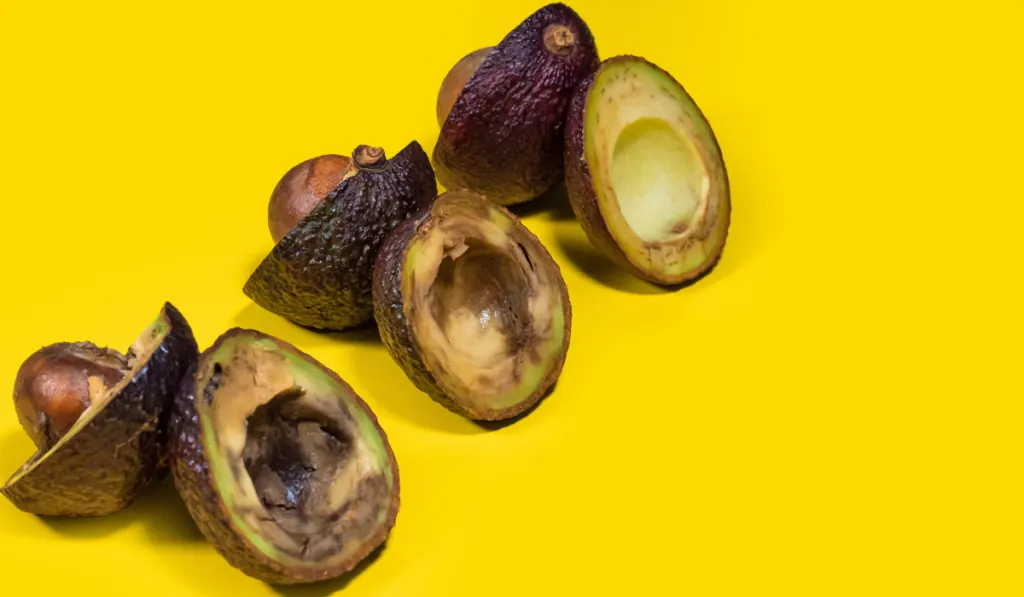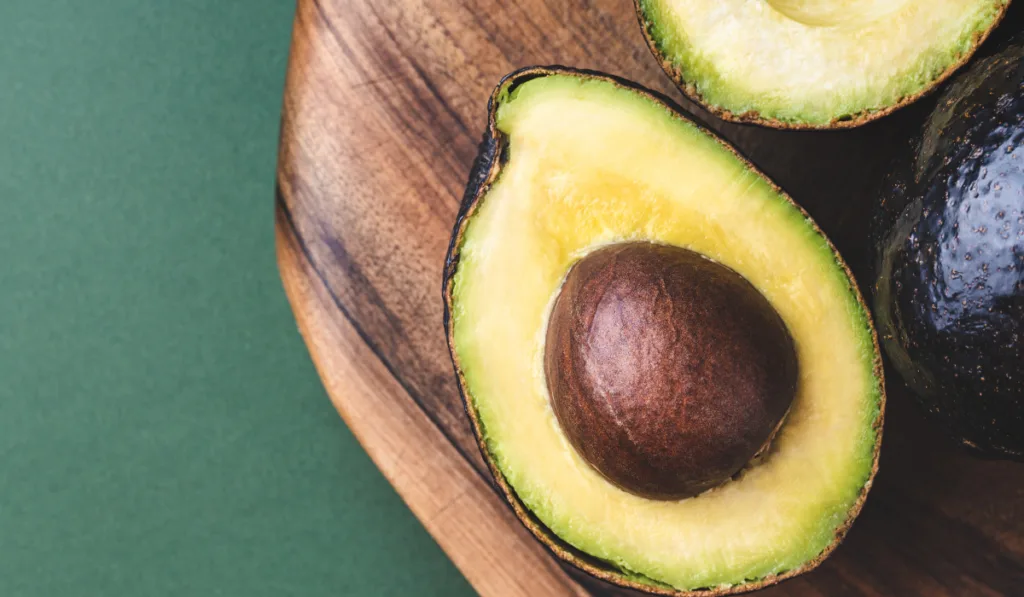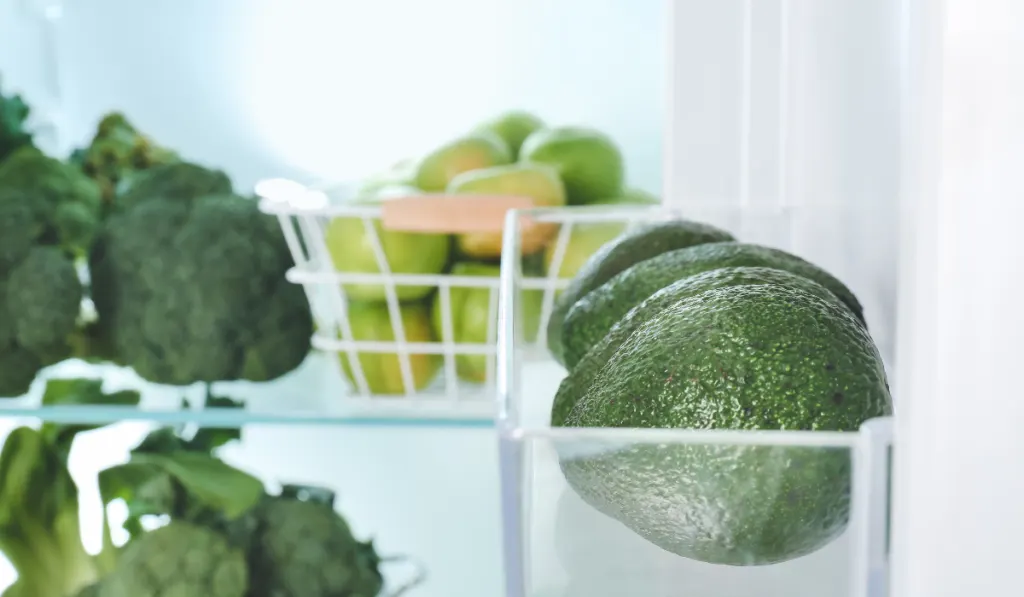Avocados are one of the more complex fruits to tell when they’ve gone bad. They’re expensive too, so most people want to buy them at the right time and ensure they eat them before they start turning south.
How can you tell if an avocado is bad?
Usually, the best way to tell if an avocado is bad is by looking for obvious signs of rot or if it feels incredibly mushy when you press on the skin.
Then, when you open the avocado, avoid eating any that have a foul smell or a rancid taste. An avocado;s flesh can start to become stringy when it is overripe.
While you can still eat some avocados with stringy flesh, they begin to become unappetizing and go bad when left outside for too long.
There are ways to tell if avocados are still good in the grocery store and on your kitchen counter. Similarly, you can look for signs that an avocado is bad to avoid spending money on rotten produce and skip any avocados that rot before you eat them.
Here are some effortless ways to tell if an avocado is bad.

Table of Contents
Dark Skin
Avocados progress from light green to darker green as they ripen.
When they’re first plucked off the tree, they’re usually still hard to the touch and bright green. Grocers and farmers want avocados in their stores early because they have a short window where they are best to eat.
That means less time on the shelves for customers to see and buy. In addition, by getting them in stores early, the grocers reduce waste. Instead, they let customers take them home and wait a couple of days for them to soften and turn ripe.
As a result, you should check the color of avocados before you buy or cut them open.
If the skin is black, it’s either a sign that the avocado is much too ripe or bad.
Either way, you should avoid buying black avocados because there’s a good chance they’ve spoiled.
Foul Smells
Of course, whenever you smell something rotten or sour from an avocado, it’s best to avoid it. This goes for both closed and opened fruit.
An avocado should have a pleasant, mild smell. If you notice anything strange or sharp smelling, don’t take any chances by proceeding to eat it.

Texture Issues
A good avocado will have a smooth, creamy texture. Many people make the mistake of cutting their avocados open too soon. You get home from the store eager to eat them, but they’re not ready yet!
The flesh is stiff when you cut it open and won’t peel away from the seed or skin. It’s always unfortunate when that happens because it’s rare you can salvage an avocado that you open too early.
Conversely, cutting avocados open too late can often reveal dark, blotchy, or stringy flesh inside.
Stringy fibers inside an avocado are standard, but it’s a turnoff for a lot of consumers. People want the smooth textures they see on restaurant-quality avocado toast, and they hesitate to eat anything different.
However, you can still eat avocados with stringy flesh. It’s up to you how far you want to take it. You likely won’t get sick eating stringy avocado unless evident rot or a foul smell accompanies the ripe fruit.
Can You Eat an Avocado with Brown Streaks?
You can eat an avocado with brown streaks. Some brown on your avocado is completely normal.
Browning happens when the flesh of the fruit oxidizes after you cut it open.
Like apples, bananas, and other fruit, avocados will start to turn brown once exposed to the air.
This is why almost all types of open avocado you buy in groceries, like guacamole, are sealed in air-tight containers. They prevent any air from getting in and give you that quintessential green color.
If you’re at home, you can also sprinkle some lime or lemon juice on the avocado flesh to stop it from turning brown so quickly.
People sometimes wonder if brown means it’s gone bad.
Typically, you can still eat avocado with brown streaks. However, if it’s deep brown or the avocado has been sitting out for days, it’s best to avoid eating it.

What Are the Best Ways to Store Avocados?
OK, so if you cut open the perfect avocado, and there are no brown streaks or stringy flesh, then what?
Ideally, you’ll eat what you cut open the same day. However, this is not always realistic, so it’s essential to know how to store your avocado to eat later.
Remember that avocados have a shorter shelf-life than many other fruits and vegetables. So, you can’t store it in the fridge forever, no matter what you do.
Here are some tips if you’re looking for ways to store your avocados.
Leave the Seed In
People usually eat avocados in halves. Leave the pit inside if you want to save the half you don’t eat for later. Instead, wrap it in plastic and store it in the fridge. The seed will stop the flesh from turning brown too fast.
Use Citrus
As mentioned, a squirt of lemon juice will slow the oxidization process and keep your avocado green.
Use an Airtight Container
Stopping air exposure will keep your avocados in good condition longer. Put them in a sealed container and stick them in the fridge.

Does Storing Avocados in the Fridge Help Them Last Longer?
Storing avocados in the refrigerator helps them last longer. But cold temperatures won’t keep an avocado good forever.
You’ll probably get a few more days out of them versus keeping them open on the counter. So, if you want to avoid eating rotten avocados, you should only cut them open when you’re ready to eat them that day or the next.
Final Thoughts
Avocados are one of the more expensive fruits you can buy in the produce section. They have short shelf-life, which makes them cost more for grocery stores to stock and sell.
Hopefully, these tips will help you avoid buying any rotten fruit in the store and help you keep them better once you get them home.
